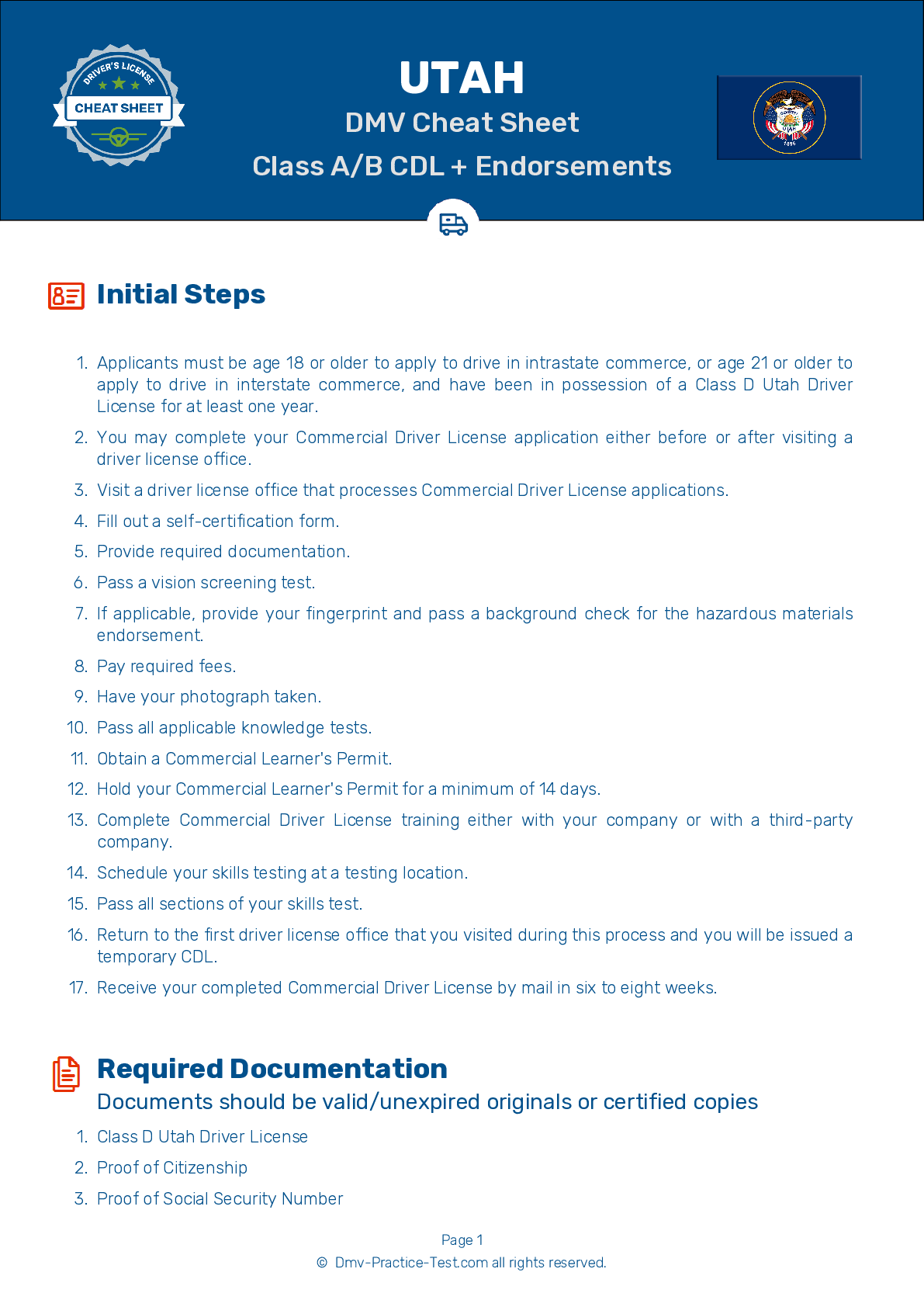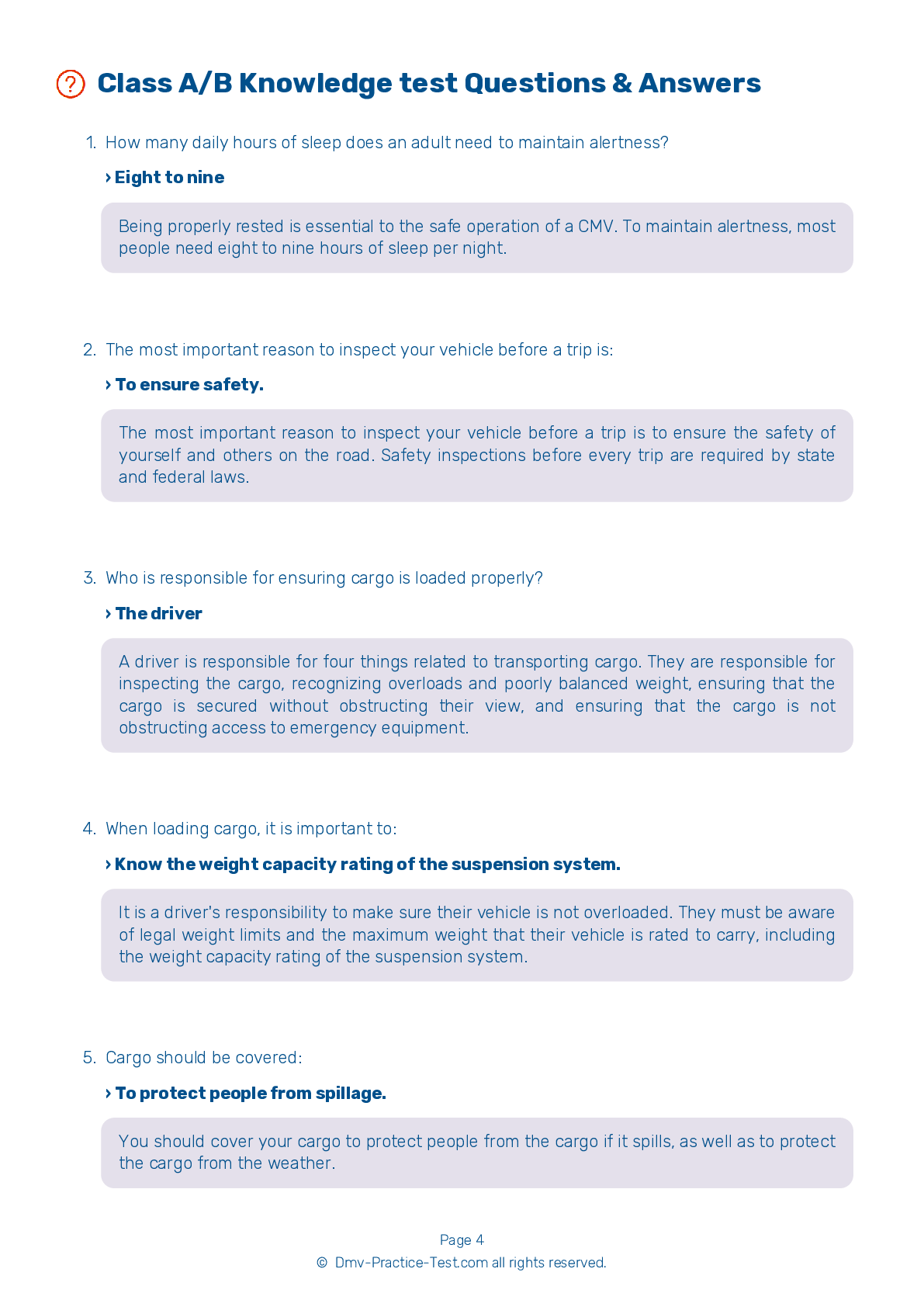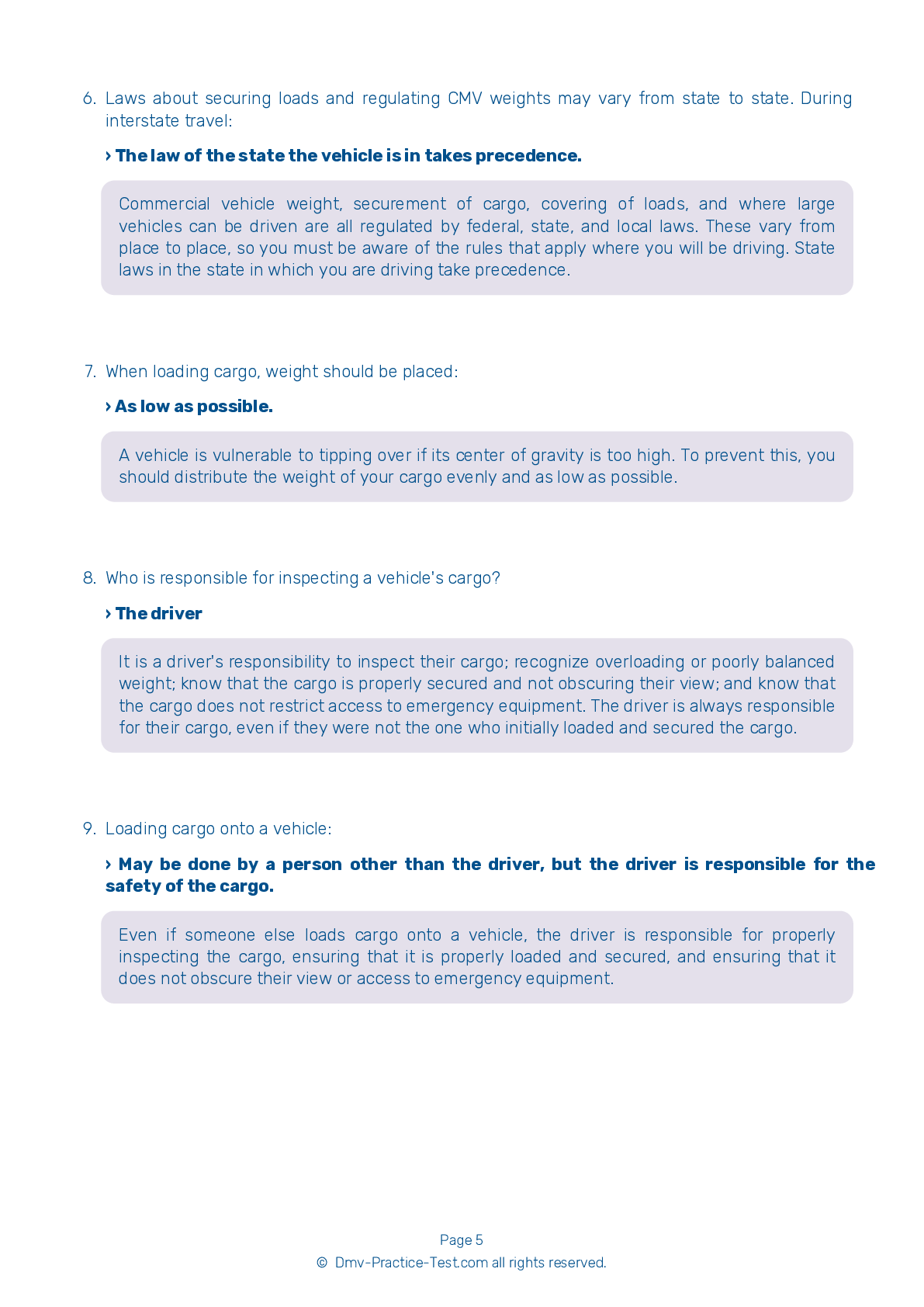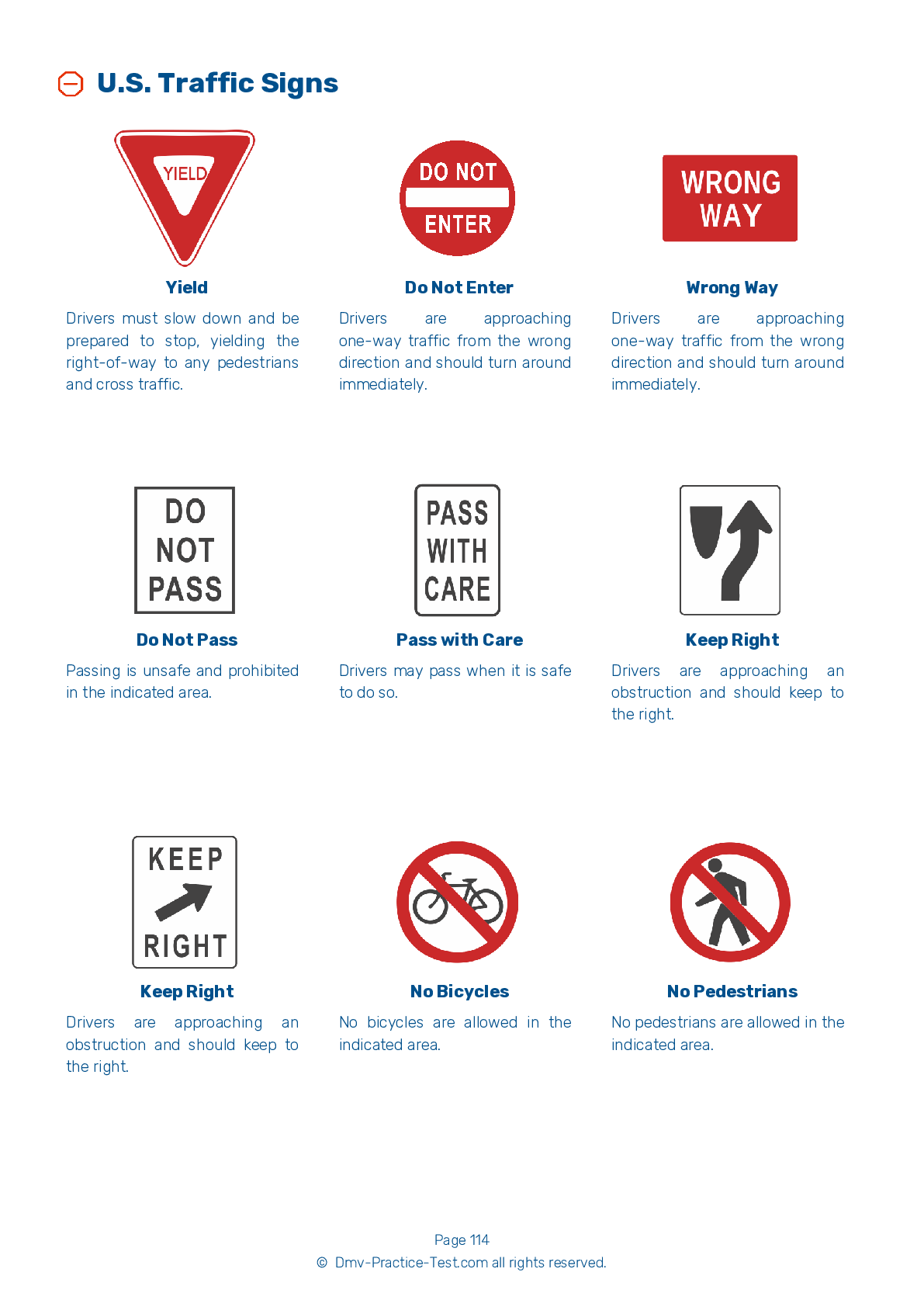Passenger #2
Passenger Endorsement | Utah 2025 #2 Page 2 of 3
Train for FREE with our Utah CDL passenger endorsement practice test online. The official exam test consists of several obligatory parts, with all of them checking your knowledge of different blocks of road rules. If you need to obtain a UT DMV passenger endorsement in 2025, practice as much as possible. Free sample tests published on our website will help you check and improve your knowledge and boost your grades. Please bear in mind that DMV requirements for issuing a CDL permit with passenger endorsement may vary from state to state.
20
16
20
8 . Which of the following statements is correct?
Welded repairs are acceptable for wheels on rear axles.
Missing clamps, spacers, studs, or lugs can be a dangerous defect. Mismatched, bent, or cracked lock rings are not safe to be used. Wheels or rims with welded repairs are not safe.
9 . Rough acceleration:
Should be used to prevent rust from forming.
Always accelerate smoothly and gradually so that your vehicle does not jerk. Rough acceleration can cause mechanical damage.
10 . Which of the following is acceptable?
Tires with cracks
When inspecting a vehicle, you should ensure that dual tires do not come into contact with each other or with other parts of the vehicle. Tire sizes should not be mismatched, and tires should not be cut or damaged in any way. Regrooved, recapped, or retreaded tires are not permitted to be used on the front wheels of a bus.
11 . A broken exhaust system:
Helps the vehicle run better.
A broken exhaust system is extremely hazardous because it can permit poisonous fumes to enter the vehicle's cab or sleeper berth.
12 . A rear tire with a tread depth of 2/32 of an inch is acceptable.
Tires need to have at least 4/32 of an inch of tread depth in every major groove on the front tires, and at least 2/32 of an inch of tread depth on other tires.
13 . The most important reason to do a pre-trip inspection is that it helps ensure safety.
The most important reason to inspect your vehicle before a trip is to ensure the safety of yourself and others on the road.
14 . Drivers may use ____ red reflective warning triangles when their vehicle is stopped on the side of the road.
Seven
If a vehicle carries red reflective triangles, the driver should place three of them as warning devices when the vehicle is parked on the road.
2025 Utah | Frequently Asked Questions
To acquire a CDL Tank endorsement in Utah, you must first have a valid CDL. Then, you need to pass the Tank Vehicle written test at a Utah Driver License Division office. The test covers knowledge about tank vehicles, their unique properties, and how to safely operate them. Once you pass the test, the endorsement will be added to your CDL.
To obtain a CDL Tank license, you need a valid Commercial Driver's License (CDL). You must then pass the Tank Vehicle written test, which covers knowledge on the safe operation and unique properties of tank vehicles. The test is offered at Utah Driver License Division offices. Once passed, the endorsement is added to your CDL.
While specific training is not mandatory for a CDL Tank endorsement in Utah, it's highly recommended to prepare for the endorsement test. You should understand the safety protocols, inspection procedures, and driving techniques for tank vehicles. Practical experience, although not required, can also be beneficial. Always refer to Utah's CDL manual for comprehensive information.
Yes, to obtain a CDL Tank endorsement in Utah, you are required to pass an additional written test. This test focuses on the safe operation and unique properties of tank vehicles. It is separate from the general CDL test and must be taken at a Utah Driver License Division office.
The written test for a CDL Tank endorsement covers various subjects related to tank vehicles. This includes the inspection and maintenance of tank vehicles, understanding bulk packaging markings, driving stability and handling, safe driving rules, and emergency response procedures. The test is designed to ensure drivers can safely operate tank vehicles.
During the CDL Tank endorsement assessment in Utah, several skills and maneuvers are assessed. These include inspecting the tank vehicle for safety, proper loading and unloading procedures, controlling the vehicle's speed and braking, maneuvering through turns and curves, and maintaining control during emergency situations. Additionally, knowledge of hazardous materials regulations and proper handling procedures is also evaluated.
Yes, drivers with a CDL Tank endorsement must adhere to specific regulations. They must ensure the load is properly balanced and secure, follow all safety procedures when loading and unloading, and handle hazardous materials carefully. Additionally, they must comply with hours-of-service regulations to prevent driver fatigue. Violation of these rules can result in fines, suspension, or revocation of the endorsement.
No, a valid CDL Tank endorsement is required to transport liquid or gas materials. This ensures the driver is knowledgeable and skilled in handling such materials, which can pose unique challenges and risks. Driving without the necessary endorsement is illegal and can result in serious penalties, including fines and suspension of the driver's CDL.
Yes, a CDL Tank endorsement can be added to your current commercial driver's license. You don't need to apply for a new license. However, you will need to pass the tank vehicle written test and pay the required fee. The endorsement allows you to transport liquid or gas materials in a tank vehicle. Always ensure you comply with all regulations.
Yes, to handle hazardous materials in Utah, you must have both a CDL Tank endorsement and a Hazardous Materials (HazMat) endorsement. Getting the HazMat endorsement involves passing a knowledge test, undergoing a TSA background check, and fingerprinting. This ensures that drivers are trained to handle these materials safely and understand the associated risks and precautions.



